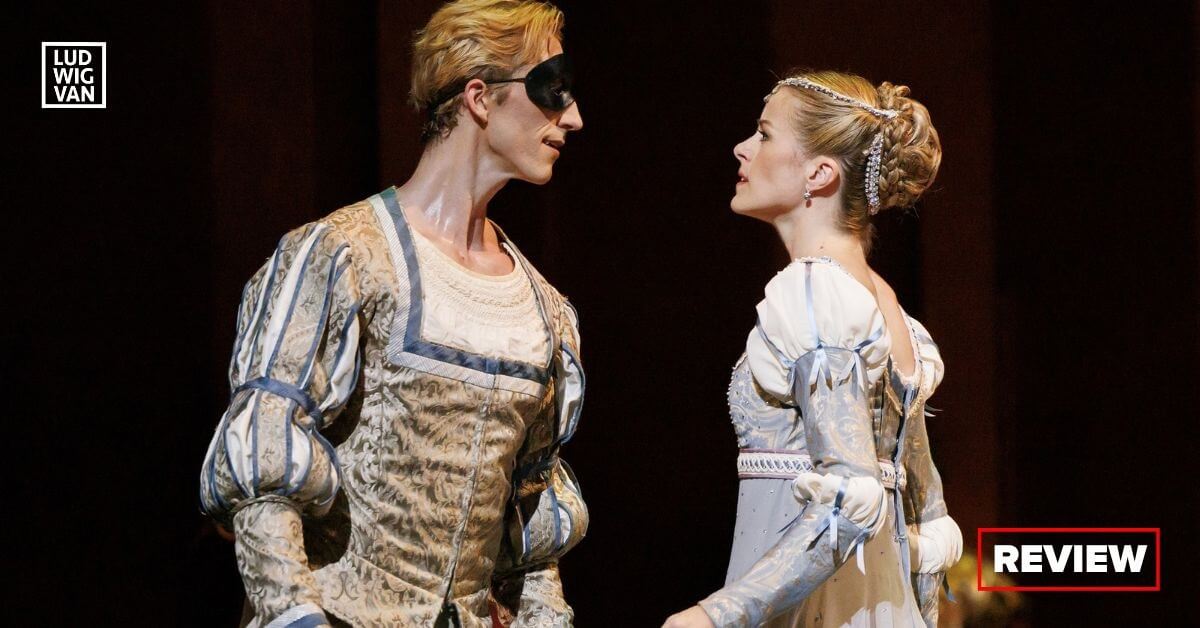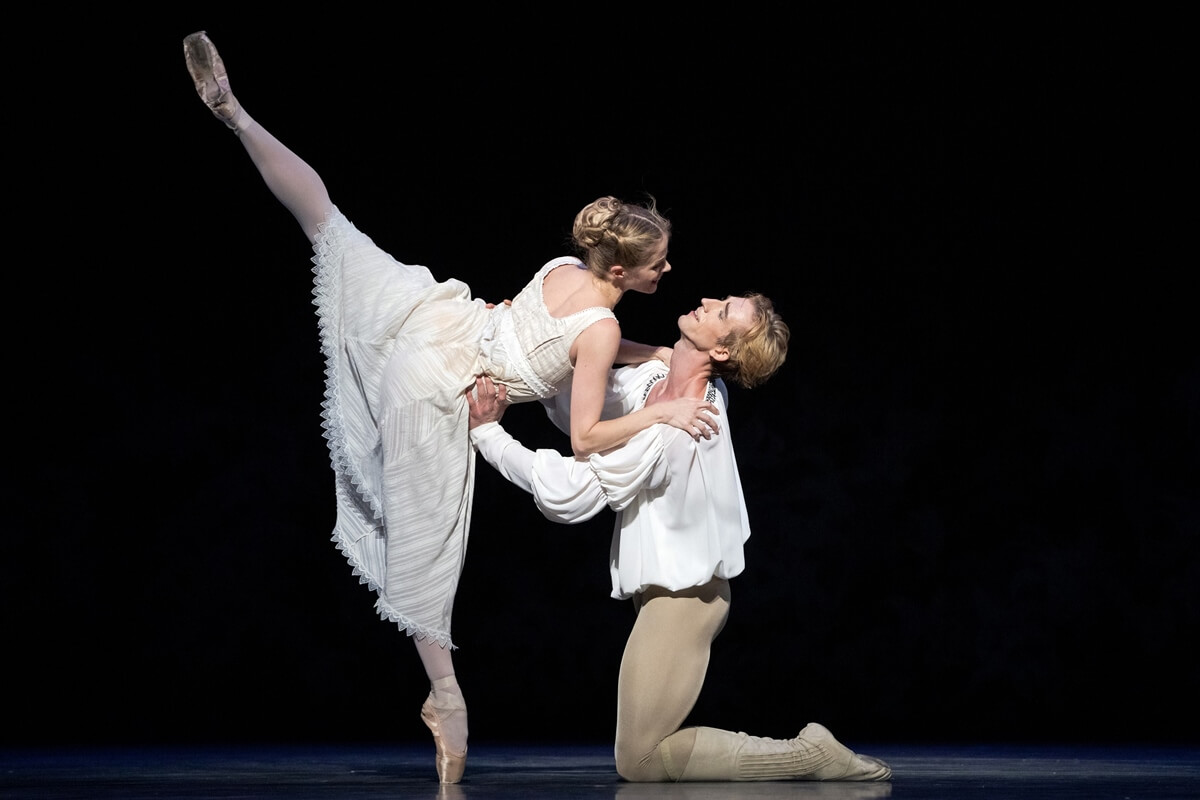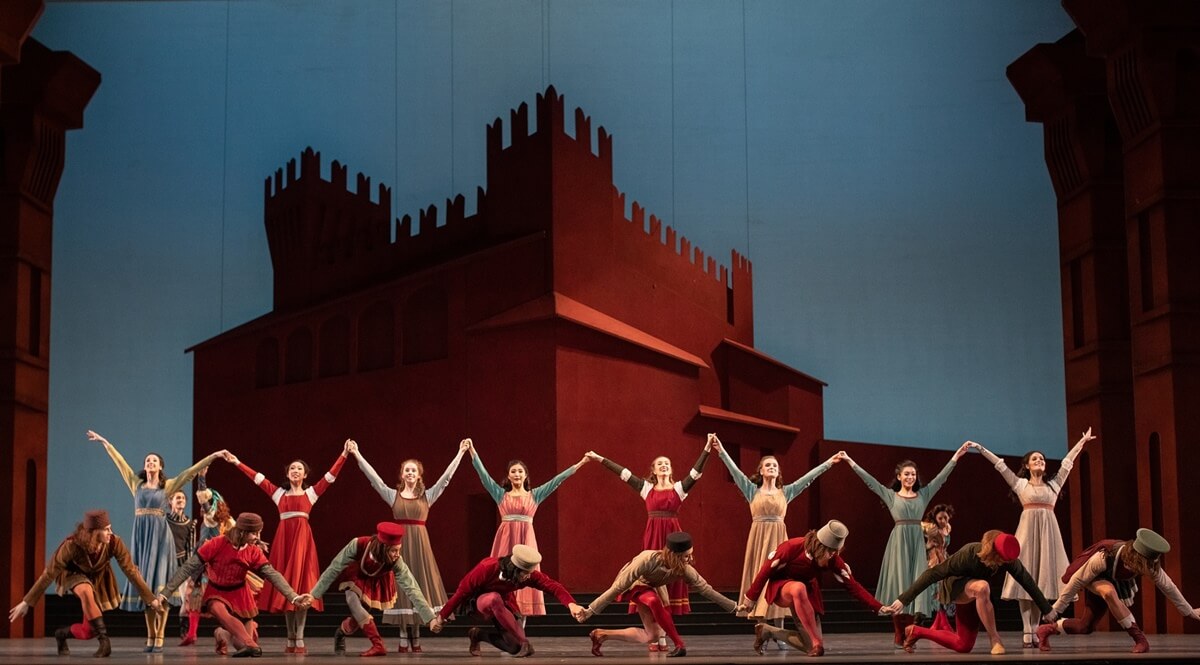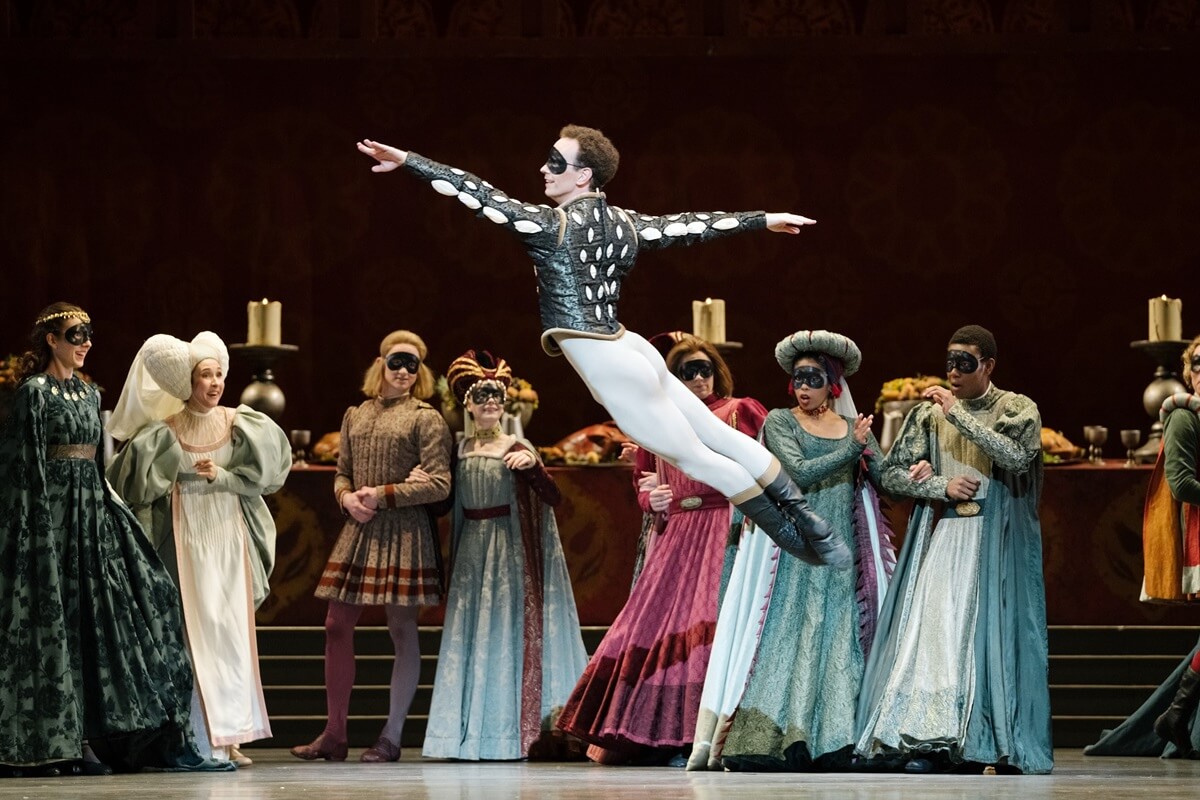
The National Ballet of Canada/Romeo and Juliet, choreographed by Alexei Ratmansky, Four Seasons Centre, Jun. 15 to 25. Tickets here.
Twelve years have gone by since Alexei Ratmansky’s Romeo and Juliet entered the repertoire of the National Ballet of Canada in 2011, and, as I’ve said in previous reviews, this version, created specifically for the company, continues to grow in my admiration.
While I did appreciate Ratmansky’s choreographic brilliance from the start, the beloved John Cranko version, which the National had been dancing since 1964, was so ingrained in my psyche, that I couldn’t help seeing two ballets in my mind at the same time. Well, all memories do fade, so, perhaps, finally, after 12 years, I’ve at last been able to lay Cranko to rest, and give Ratmansky my undivided attention.
As a result, all the aspects of Ratmansky’s Romeo and Juliet that speak of greatness have come more sharply into focus.

First and foremost is the choreographer’s musicality. Ratmansky’s movement fits Sergei Prokofiev’s music like hand to glove. In fact, the two are inseparable. It is impossible to tell whether the music is driving the dance, or the dance the music, that is how intricately the two are entwined. Thus, you hear Prokofiev’s richly detailed 1935 score with such a deep intensity, that the notes seem to enter your very bones, and at this point, we have to congratulate Maestro David Briskin and the National Ballet’s orchestra for the sensitivity of their playing.
Yes, the composer included lighter moments such as Romeo, Mercutio and Benvolio larking about, but, overall, this is a grim and heavy score. Even the lush and rapturous Romeo and Juliet pas de deux music exudes an overwhelming darkness. An ominous foreboding lies at the heart of Prokofiev’s musical imagination, which I found even more acute than ever before, and Ratmansky’s choreography helped propel that feeling.
Perhaps the fusion of music and dance is so powerful because Ratmansky has closely followed Prokofiev’s own scenario — in other words, his own outlines for each scene. Thus, when a choreographer abides by what the composer details, the movement has to come from a position of strength.
Which is not to say that Ratmansky did not engage in his own imagination.
For example, Romeo refuses to be goaded by Tybalt when a vision of Juliet appears. Similarly, when Romeo has left Verona, Ratmansky has included a dream sequence where Romeo and Juliet are longing for each other, but are parted. This is conveyed by the two dancers being carried aloft in opposite directions, like ships passing in the night. As Friar Laurence explains the potion to Juliet, a faux Juliet is seen dying and then awakening in Romeo’s arms.
Ratmansky’s movement itself is also brilliantly character-driven. Romeo’s uber-romanticism, Mercutio’s physical antics, Tybalt’s alpha male, Paris’ staid nobility, the Nurse’s fussiness, and of course, Juliet’s girlish exuberance — all are beautifully fleshed out portraits of real people.

Designer Richard Hudson created a huge, uni-coloured, stylized cityscape for Verona which dwarfs the dancers, with this oversizing, as it were, carrying over to Juliet’s bedroom, Friar Laurence’s cell, and the crypt. On the other hand, this monolithic design treatment seems to set the dance itself into a greater stark relief that highlights the ballet’s very intimate nature.
As for Hudson’s costumes, they realistically recreate the Renaissance, with each outfit for both the characters and the ensemble being different, one from the other. My only complaint it why have Juliet’s four friends in utterly ugly, grey identical dresses? Their very sameness really stands out as a misfit.
But let’s get to the dancers, because, overall, it was a very strong evening.
Heather Ogden (Juliet) has never looked better. She was positively incandescent as both a dancer and an actor, as her technique merged with character to create a flawless portrait of impetuous youth. Her radiant performance was sublime.
Ben Rudisin (Romeo) danced very well, He can certainly do the showy stuff, and seems to be an excellent partner. He also has the most beautiful and graceful arms. As an actor, however, I wanted more. The character was there, but needed to be sharpened. Rudisin did everything that Romeo was supposed to do, but it was muted. Work on those acting chops, Ben, because it did take away from the chemistry with Ogden who was, at times, emoting for two.
The scene stealers were Jack Bertinshaw (Mercutio) and Peng-Fei Jiang (Tybalt).

The former has the speed and attack of his mercurial character, edged with a sly sense of humour. He was a delightful, playful brat who can also dance up a storm. Jiang, meanwhile, is still in the corps, but has been steadily getting roles since joining the company in 2017. His Tybalt was absolutely terrifying, even majestic in his fury. What a commanding, charismatic figure he portrays on the stage. A definite principal dancer in the making.
Albjon Gjorliaku (Benvolio) made a strong showing as Mercutio’s and Romeo’s rambunctious follower, while Christopher Gerty was a stately and sympathetic Paris. Jenna Savella and Tanya Howard (Prostitutes) were suitably lively and bawdy.
Alejandra Perez-Gomez (Nurse) was a delightful bundle of loving warmth, while Stephanie Hutchison (Lady Capulet) managed to be both cruel and kind at the same time, but always the soul of dignity. Peter Ottman (Friar Laurence) brought tremendous pathos to his role, while former company members Etienne Lavigne (Lord Capulet) and Jonathan Renna (Duke of Verona) were back to give strength to these elder statesmen.
As for the ensemble, they showed verve and energy throughout because Ratmansky has them performing flat-out dancing. In fact, this is a narrative ballet that dances. There is no traditional mime to tell the story. Rather, the plot arises out of the movement itself — another of Ratmansky’s choreographic strengths.
But I do have one more complaint. Four male masquers/clowns entertain the townsfolk in an intricate dance, and are important enough to get their own bow in the curtain call, yet their names are not in the program. I want to know who they are. Why aren’t they listed?
Finally, I want to say my personal farewell to three dancers who are retiring from the stage at the conclusion of the season — Alejandra Perez-Gomez, Stephanie Hutchison and Tanya Howard. All three have given me much enjoyment over the years, and I thank them for the richness of those performances.
#LUDWIGVAN
Get the daily arts news straight to your inbox.
Sign up for the Ludwig van Daily — classical music and opera in five minutes or less HERE.
- INTERVIEW | Actor Diego Matamoros Takes On Icon Walt Disney In Soulpepper Production Of Hnath Play - April 16, 2024
- SCRUTINY | Opera In Concert Shine A Light On Verdi’s Seldom Heard La Battaglia Di Legnano - April 9, 2024
- SCRUTINY | Lepage & Côté’s Hamlet Dazzles With Dance And Stagecraft Without Saying Anything New - April 5, 2024



